- Home
- Neil Gaiman
Beowulf Page 12
Beowulf Read online
Page 12
From somewhere we hear what sounds like a WOMAN WAIL, briefly, then no more.
CUT TO:
158 EXT. THE GEAT CLIFFTOP - DAWN
158
A long line of Geats -- MEN, WOMEN AND CHILDREN, are lined up on the path up to the clifftop, watching a DOZEN MEN and a couple of shire horses dragging a longship up the path towards the clifftop.
We see a number of women and men from the front, but we stop behind A WOMAN IN A WHITE COWL, without seeing her face.
CUT TO:
159 EXT. THE GEAT CLIFFTOP - DAWN
159
It is the grey time before dawn.
The thanes have hauled a ship up to the cliff-top, just like the ship Beowulf went to Denmark in, at the start of the story.
And then, slowly, in a long procession, the Geats walk past the ship. Each of them throws a piece of wood into the body of the boat.
SLOW DISSOLVE TO:
160 EXT. THE GEAT CLIFFTOP - LATER - DAWN
160
The boat is filled with pieces of driftwood.
But the Geats are still walking past -- throwing golden things into the boat -- pulling off arm-rings, finger-rings, necklaces -- it seems like everyone has some piece of Gold.
The ship is hung with shields and armor, and all the treasure that was brought from the dragon’s horde.
When the woman in the white cowl throws gold and wood, we only see her from the back.
Last of all we see Old Wiglaf. He holds the Dragon’s Cup, and tosses it through the air.
It spins through the air until it lands on the firewood.
Only then do SEVEN THANES approach carrying a stretcher, on which Beowulf’s dead body has been placed, arms folded across his chest. THE PEOPLE part to let it by, reaching out and calling and sobbing as they see King Beowulf’s body. Eva Peron eat your heart out.
The Thanes tie Beowulf’s dead body to the mast of the ship, facing out to sea. Then
A BURNING BRAND
being carried by Old Wiglaf.
OLD WIGLAF
I…he was the bravest of us. The prince of all warriors. His name will live forever. He
Wiglaf breaks down.
Wiglaf takes the burning brand and touches it to the side of the boat. Which begins to burn.
Soon, the boat begins to pour smoke out from its hull, and then it BURSTS INTO FLAME.
And we look at the faces of the Geats, Some of them are weeping, some staring, stone-faced.
The flames reach King Beowulf’s body, and the woman in the white cowl begins to SING.
It’s a SONG OF MOURNING AND MAGIC, a sad, wordless wail, tuneful and dark. The song of a woman mourning her sons…mourning her lover.
Her song is sad, beautiful and transcendent.
As the sky brightens, the woman in white walks down the path to the sea shore, still singing. The Geats do not follow her, but stand all around the burning ship.
Bits of burning wood and golden things begin to fall down the cliff as the burning boat begins to crumble.
We see Beowulf’s body burning…
CUT TO:
161 EXT. THE GEAT SEA SHORE - DAWN
161
We are looking down from above as Grendel’s Mother -- the woman in the white cowl -- begins to drop clothes on the beach, first her cloak and hood, then her skirt. She leaves the clothes on the beach behind her.
She walks into the sea. Her hair streams out behind her, like seaweed. She walks out until the sea covers her completely…and her song is done.
We watch the sun rise slowly.
She does not reappear.
She has gone beneath the waves.
THE END
Concept Art
An early drawing by Roger Avary showing the size of Grendel. Note that Grendel’s pose is in the style of Egon Schiele.
The first Stephen Norrington Grendel designs commissioned by Avary, who especially loved the penis taped to the leg.
More Norrington designs.
An early design of Grendel wearing a mask made of whale bones.
Another early Norrington design.
These seventeen pieces are an early storyboard that envisions the climatic battle.
PART II
The Winter
Middleword
BY ROGER AVARY
It was December 2004 when I checked in. The hotel had once been a police station—a fascist-looking tower of a building bordering the bad neighborhoods of Toronto. My room was down the hall from the kitchen. It smelled of barbecue, which when I first checked in was delightful. But after weeks of smelling bacon fat burning on the griddle I began to feel nauseous. The stink permeated my clothes, my hair, and my dreams. But I couldn’t leave the room. This was my office while I polished the screenplay of Silent Hill for director Christophe Gans. It was a living hell. The only escape was to take a walk in the bitter cold. Cold so intense and dry that it freezes the saline on your eyes, giving you a constant popsicle head ache. I just wanted to go home to California, where it was warm and my family awaited me for Christmas. But I wasn’t going to be able to leave unless I finished—and with Gans lurk ing over my shoulder and directing me like a French-speaking demon, finishing was difficult enough. The last thing I needed were the phone calls.
Various agents from my agency began calling me, one after the other, all on behalf of Robert Zemeckis. It seems that he had gotten it into his head after all these years that he should be the one directing Beowulf. He loved the script—always had. Now he loved it so much he wanted to take the reigns and “cap it,” referring to the Performance Capture process of digitally enhanced live action he had pioneered with The Polar Express. And it made sense to cap it, because we had always had the issue of how to age Beowulf. Aging has always been difficult in movies, and I can only count three instances where I thought it was done elegantly (David Bowie in The Hunger, Marlon Brando in The Godfather, and Dustin Hoff man in Little Big Man). This was coming at me out of nowhere, and I was in a fragile mental state—what with the burning carcasses in the adjacent kitchen. It was a respectable offer, above my already ludicrously inflated quote. There was only one problem: I was dead set on directing the film myself.
Samuel Hadida, the producer of Silent Hill as well as my first film, Killing Zoe, was express ing interest in producing and financing Beowulf under the title The Age of Heroes. Low budget. Raw. Dirty. Violent. It was going to be my epic. My Excalibur, with a bit of Polanski’s Macbeth and Terry Gilliam’s Jabberwocky thrown in for good measure. My hair was down below my shoulders and I had grown a Viking beard for the project. While skiing in Mammoth Mountain I had won the “Woolly Contest.” It made me look sixty, and had a lightning streak of gray through it that looked rather savage. Growing the beard was an important commitment to my soul that I would make this film. My plan was to not cut it until the film was complete. I was going to direct Beowulf—and the beard proved it.
But the calls kept coming in. One after another, each from a more and more powerful agent. Each urging me to make the deal. Soon, they were calling Neil, but as he dutifully and politely pointed out to them, “It’s Roger’s film. I wrote it with him, for him. He gets to decide what happens to it.” The numbers rose daily, and each time I told them “no” they would first try to talk me out of it, then bemoan my obstinacy, and then beg me to reconsider. At a certain point, when the numbers inflated beyond my expectations, I began to question my own compass. After all, it was the holidays—it should have been appealing. But I had NEVER made a choice in this business based on money alone. I had only followed my internal passions, and at this moment they were telling me that Beowulf was my calling. With hundreds and hundreds of thousands of dollars at stake, I again declined, and I was starting to become annoyed.
At this juncture, it has to be said that Neil Gaiman is by and far the most honorable and noble collaborator I will likely ever have the honor of working with. Because despite the temptation being foisted upon him, he never wavered and always stoo
d by my decisions and our initial agreement that I would control the destiny of the material. This is especially admirable since not only would we not be able to use the many drafts written during our development with ImageMovers, but Samuel Hadida was insisting that the DreamWorks turnaround costs be totally absorbed by the writer’s fee. And DreamWorks was clipping us for a percentage of every vase, Aeron chair, sushi lunch, sheet of paper, and anything else within the elegantly appointed Amblin offices of ImageMovers. This meant that if the movie got made, Neil and I would only pull in a tiny fraction of the salary, as according to Sammy’s reasoning we had already been paid for the script once before, so why should he pay us again? I resigned myself to the fact that I would have to forgo my percentage of the writer’s line item, which would work out to minimum wage compared to the astronomical numbers we were now being presented with.
I tried to get back to writing. Already, phone calls with Los Angeles had taken twenty hours away from my work, and ultimately, if they continued, they would rob me of Christmas with my family. I sat down to focus and began typing, the stench of pot roast in the air. Just as I was get ting a head of steam, another call came in on my cell phone—the familiar 288 prefix. I gritted my teeth, and this time I told them that if they called and disturbed me one more time I would fire the agency. They then asked (and I must say very politely) if after Christmas I would talk with Steve Bing, the producer and financier, who was now Robert Zemeckis’s partner. I told them that after Christmas I was skiing with my family, that I didn’t want to be called during that entire period, but that he could call me on January 10, when I had returned and was back to business. I simply wanted to explain to Bing why I couldn’t accept his offer.
In retrospect, as I write this, I can’t help but think that I must have come across as a total asshole for my poor agents to deal with. Here they were, wrangling us the generous deal of a lifetime on a film that wasn’t financed, and I’m turning my nose up at it—and turning Neil’s nose for him. Perhaps my behavior can only be understood by someone who has smelled beef fat day-and-night for weeks on end. I was sickened by the stench, and with every moment that passed the stench became more and more symbolic of the life of a screenwriter. That, and the writing process on Silent Hill, had me yearning to get behind a camera again—out in the open air. Out in the world of the living.
I finished Silent Hill and traveled home for the holiday. I went skiing with my family, and I continued work on the concept art for Grendel. On my own dime I had hired Stephen Norrington, the now retired director of Blade, to do storyboards and concept art for me. Every day Stephen would send me a refined illustration of Grendel: one with golden tattoos running like veins through his body, one with long hair, one with short, one with moss growing on his skin. My Grendel was taking shape, and with each e-mail attachment Stephen sent me I became more and more excited to mount the production.
At 9:00 A.M. on Monday, January 10, 2005, my cell phone rang, and when I answered, Steve Bing said, “Hello.” He requested that we meet, which we did the very next day at the Peninsula Hotel.
Steve Bing, for those who haven’t met him in person, is an imposing figure at six foot four, and his boyish blond mop, cut bowl style, at first throws you. But it’s his eyes that pull you in. One instantly knows that he’s a good man in a killer business.
We sat down over tea, my beard now nearly reaching my nipples. Steve sat across from me, folding his impossibly large hands, and simply asked me what he could do to convince me to sell him the Beowulf screenplay. He explained that Z. had fixated on Beowulf, and that if he couldn’t deliver this script to him, he would likely miss his window to make another Zemeckis movie. This was critical to him. Steve leaned in, very serious, and said, “Name your price.”
“Steve,” I said, “I only met with you so that you could see my beard and understand that I’m making this movie already. In my soul—I’m making it. I’m following my muse. If I don’t direct this film, I’ll die.”
He didn’t seem fazed by this at all, though later he told me that he had never expected my particular level and flavor of tenacity. He barely adjusted his poker gaze and said, “I respect your artistic integrity, but…humor me. Throw out a number.”
Now, I’ve read about situations like this, but I’d never been in one myself. It’s very unusual, and humbling. What does one do? Decline? I leaned back into my chair and the words came out: “You seem like a nice guy, and I have a great amount of respect for you, but I’m only going to tell you a number to discourage you.”
I proceeded to throw out numbers that seemed impossible for him to meet. I tried to recall the largest spec screenplay sales I had ever heard of. I told him he would have to cover the DreamWorks turnaround costs. I told him he would have to cover my incurred expenses, dating back fifteen years. I told him I would need my director’s compensation. I told him that since I would be walking away from one film, that I would need another—and that he would have to buy me the screen rights to a book I had my eye on. I continued on that I would need to be scanned, and that my image would have to be placed somewhere into the film. Neil Gaiman and I would have to be producers—and no other writers would be allowed to mess with the material. I asked for the moon. I did everything I could to discourage him.
He stared back at me blankly, looking rather stunned, and said, “Wow. That is discouraging. But…I think we can make a deal.”
Be careful what you wish for—you might get it. And I got it. And I cried for days when I realized that I had agreed to let go of this thing that I loved—this movie that I had already filmed in my head, but wanted to give to the world. I had never made a deal against my passion and for the money. Now, I had no film. I had done what I never thought I would do—I went against my artistic desires. I was depressed. I cried for nearly a week…until the check came in.
Let me tell you, nothing dries tears like money. But more important than money, and twice as unexpected, was the level of collaboration and the warmth of acceptance that Neil and I received from Robert Zemeckis and his producing team. I had thought, perhaps naively, that by giving up the director’s chair I was simply being bought out. But Z. wanted our creative collaboration and input—he had paid well for it, that’s for sure. I knew I had passion for the material, but I had underestimated the level of Z.’s passion. And because of the unique process of digitally enhancing the live action, we would, as writer-producers, have a vast amount of input throughout the production and well into post—unusual for a writer. And since the Performance Capture process essentially builds the film in reverse, we would be able to fine tune our material up to the bitter end.
Neil flew to Ojai and checked into an artsy little hotel near my home so that we could continue the writing process for Z., whose ImageMovers offices were now in neighboring Carpinteria—just a short drive away. Neil was no longer exclusively Apple Macintosh–based, and had a tiny little Dell as his laptop. But somehow, in the ten years since we first began writing in Mexico, the chasm between the Mac and PC worlds had narrowed, and the system itself no longer mattered. We were both writing in Final Draft, on two different operating systems, but our connectivity was as elegant as had we been writing on the same OS. Now, instead of passing a disk back and forth, we Bluetoothed our scenes from one system to the next.
Z. had numerous changes he wanted to make, which surprised me. But he has a writer’s mind, and none of his ideas were the “bad ideas” that usually get thrown at you for the sheer sake of making a change. Most of his notes involved taking advantage of what digitally enhanced live action could do to further unite the two halves of the epic. Instead of having Beowulf return to Geatland, he would have him inherit Hrothgar’s kingdom, riches, and women. We would be able to see Herot transform under Beowulf’s rule. The passage of time would not only age Beowulf, but we would keep Wealthow for the second half of the epic—as well as Unferth. Beowulf would visit the dragon in the very same cave in which he succumbed to the mother. Also, as Z. excitedly t
old us: “With Performance Capture every thing costs the same. Whether you’re showing someone sitting in a chair or a dragon burning up a village—it all costs the same. So don’t hold back, boys—don’t let your imaginations be restrained by the limits of traditional 2-D filmmaking. Write whatever you ever wanted to write but didn’t think you could. Go hog wild!”
So we did. We were no longer making a Roger Avary film—it was now a Robert Zemeckis film, and it needed to feel like one. A major change was the conflict between the dragon son and Beowulf. Less talk, more action. Make it big. Make it a thrill ride. It was an exciting process, rather liberating, letting go of my darlings and giving Z. what he wanted. Robert is like a wide-eyed kid, playing with his toys—smiling the entire time like he’s getting away with murder.
I never wanted to get in the way of the production, thinking that I might not be welcome as the “other director.” But Robert never stopped quizzing me about what had been in my head. What were the color schemes I had been thinking (grey to green to white, to illustrate the seasons passing, but with a vein of gold running through the entire film)? What were the casting choices we had in mind? And this is where I believe we scored our greatest victory. I had always envisioned the heroes of the film to be in the design of Gustav Klimt, while the monsters would be fashioned after the work of Klimt’s twisted contemporary, Egon Schiele. And there was no actor who represented the sinewy, angular lines of Shiele better than Crispin Glover. I mentioned the idea of Crispin as a choice to play Grendel, and at first Z. glazed over. I expressed my belief that it would be a geek victory—the return of McFly to the Zemeckis fold. The two had locked horns during Back to the Future 2, when Zemeckis used his cinematic trickery to place the image of Glover into the sequel, which Glover had declined. Glover sued, and to this day the verdict protects actors from having their likeness used without their blessing. Z. began to regale us with stories of how eccentric Glover had been. How he couldn’t hit his mark, but in Z.’s eyes you could see that while he may be a control freak, he had fond memories of the results of Glover’s eccentricities. Besides, in the realm of digitally enhanced live action he wouldn’t have to worry about hitting his mark since there was no actual camera to focus. Most of all, you could see that Z. knew. He knew that Glover was the best choice for Grendel, so he did what was best for the movie and put aside the past. Glover elevated the role, and brought a depth of torture and sensitivity to the character. I am more proud of his involvement in this film than of any other element. He is the anchor to what Roger Avary’s Beowulf might have been, had I directed the movie—but under Zemeckis’s direction, and cloaked in a virtual monster suit, he is well beyond what I could have hoped for.

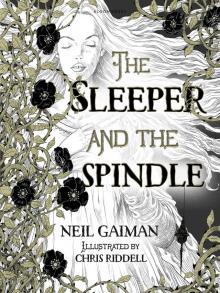 The Sleeper and the Spindle
The Sleeper and the Spindle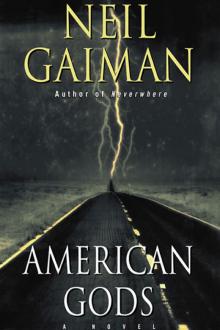 American Gods
American Gods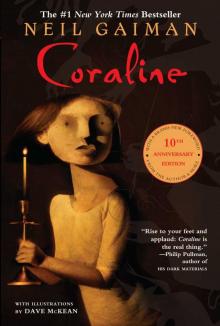 Coraline
Coraline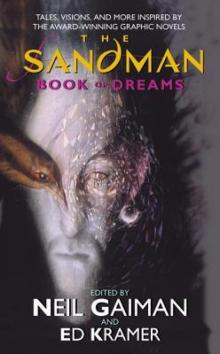 The Sandman: Book of Dreams
The Sandman: Book of Dreams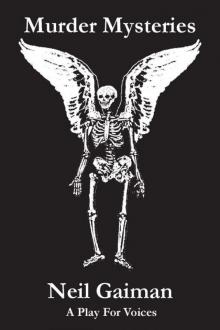 Murder Mysteries
Murder Mysteries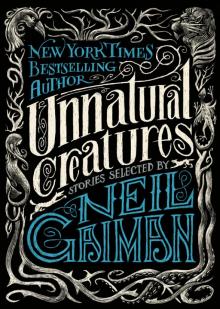 Unnatural Creatures
Unnatural Creatures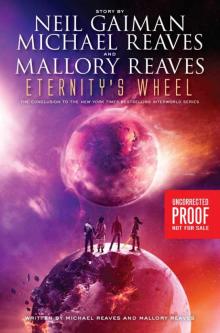 Eternity's Wheel
Eternity's Wheel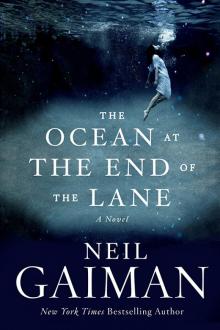 The Ocean at the End of the Lane
The Ocean at the End of the Lane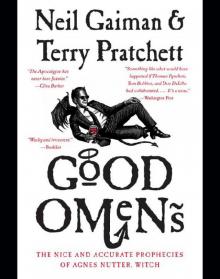 Good Omens
Good Omens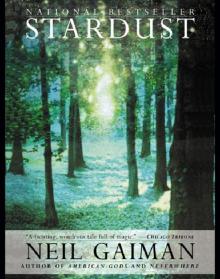 Stardust
Stardust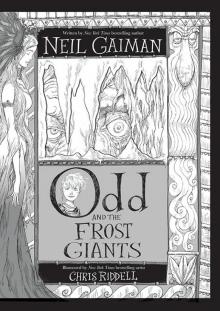 Odd and the Frost Giants
Odd and the Frost Giants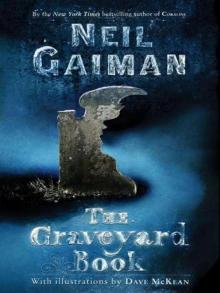 The Graveyard Book
The Graveyard Book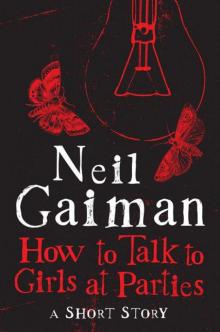 How to Talk to Girls at Parties
How to Talk to Girls at Parties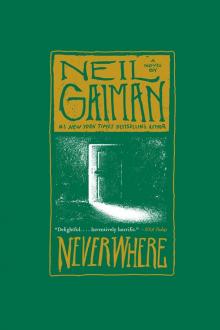 Neverwhere
Neverwhere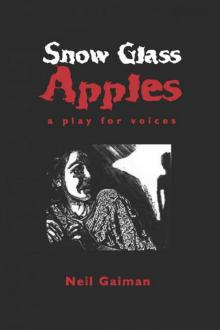 Snow, Glass, Apples
Snow, Glass, Apples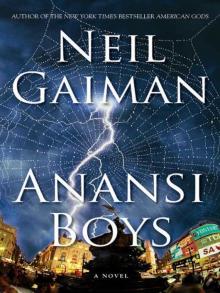 Anansi Boys
Anansi Boys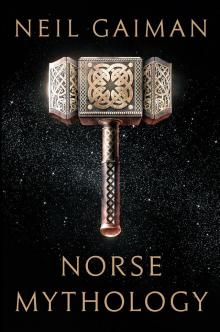 Norse Mythology
Norse Mythology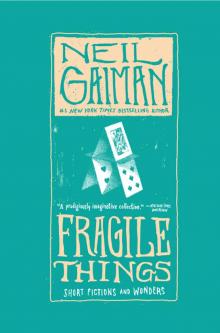 Fragile Things: Short Fictions and Wonders
Fragile Things: Short Fictions and Wonders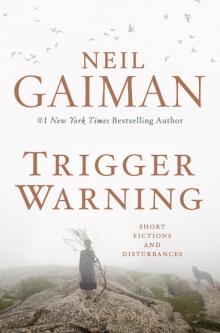 Trigger Warning: Short Fictions and Disturbances
Trigger Warning: Short Fictions and Disturbances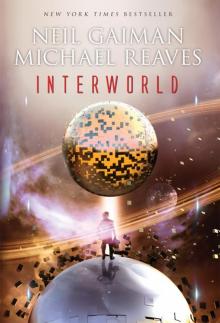 InterWorld
InterWorld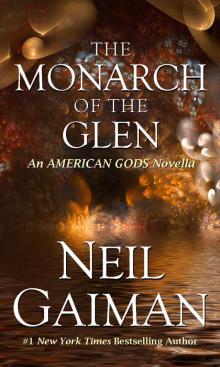 The Monarch of the Glen
The Monarch of the Glen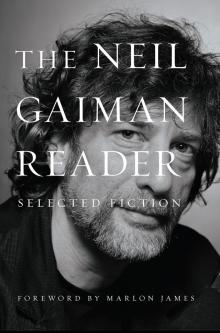 The Neil Gaiman Reader
The Neil Gaiman Reader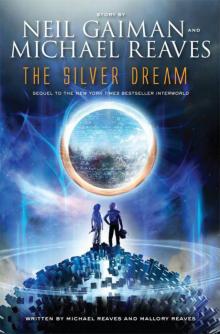 The Silver Dream
The Silver Dream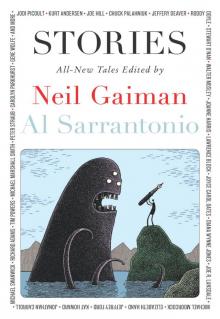 Stories
Stories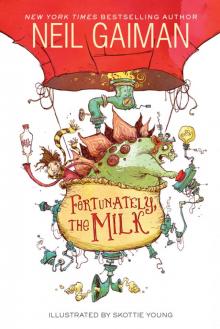 Fortunately, the Milk
Fortunately, the Milk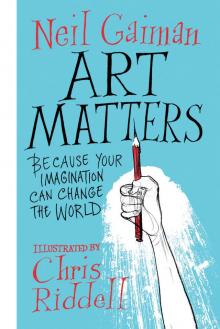 Art Matters
Art Matters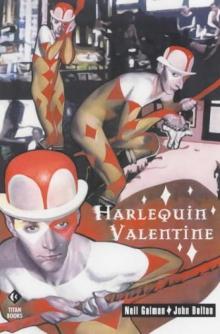 Harlequin Valentine
Harlequin Valentine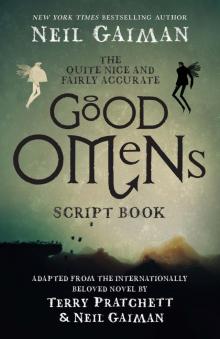 The Quite Nice and Fairly Accurate Good Omens Script Book
The Quite Nice and Fairly Accurate Good Omens Script Book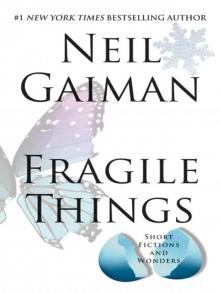 Fragile Things
Fragile Things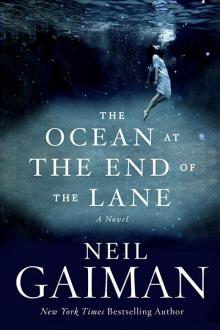 The Ocean at the End of the Lane: A Novel
The Ocean at the End of the Lane: A Novel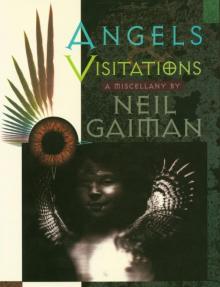 Angels and Visitations
Angels and Visitations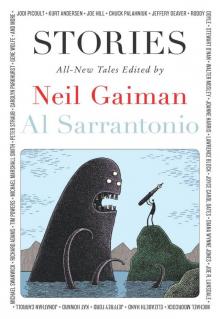 Stories: All-New Tales ngss-1
Stories: All-New Tales ngss-1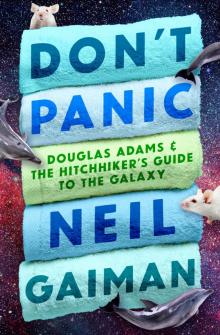 Don't Panic
Don't Panic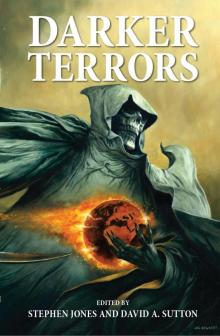 Darker Terrors
Darker Terrors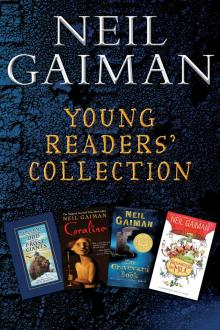 Neil Gaiman Young Readers' Collection
Neil Gaiman Young Readers' Collection A Study In Emerald
A Study In Emerald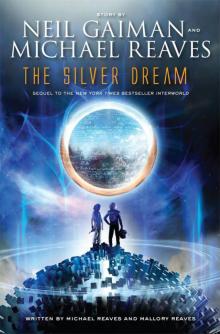 The Silver Dream: An InterWorld Novel
The Silver Dream: An InterWorld Novel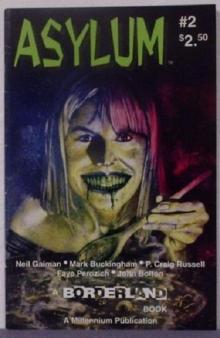 Feeders and Eaters
Feeders and Eaters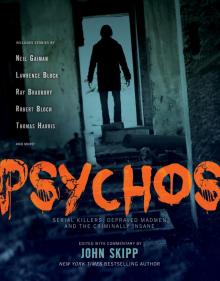 Psychos
Psychos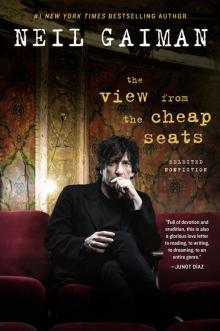 The View from the Cheap Seats
The View from the Cheap Seats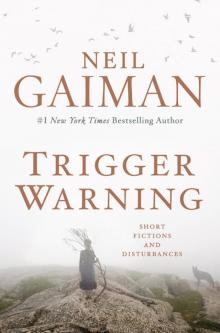 Trigger Warning
Trigger Warning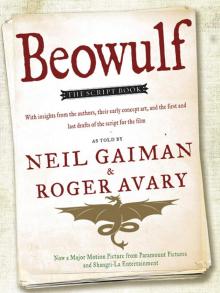 Beowulf
Beowulf Nessun Dove
Nessun Dove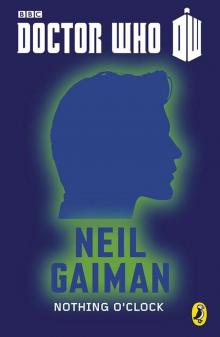 Doctor Who: Nothing O'Clock: Eleventh Doctor: 50th Anniversary
Doctor Who: Nothing O'Clock: Eleventh Doctor: 50th Anniversary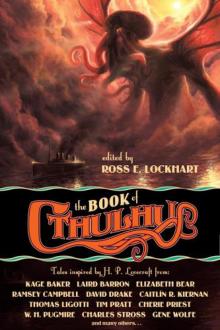 The Book of Cthulhu
The Book of Cthulhu